Part 2: Teaching Self-help Skills
Here are the various techniques that may be used to encourage and help a child to develop self-care skills:
Visual schedule of the steps involved
Children who have difficulty staying focused on dressing long enough to complete the steps or have trouble remembering the steps of dressing benefit from visuals and charts which show them the steps. These types of pictures are good reminders of the steps and can help children become more independent.
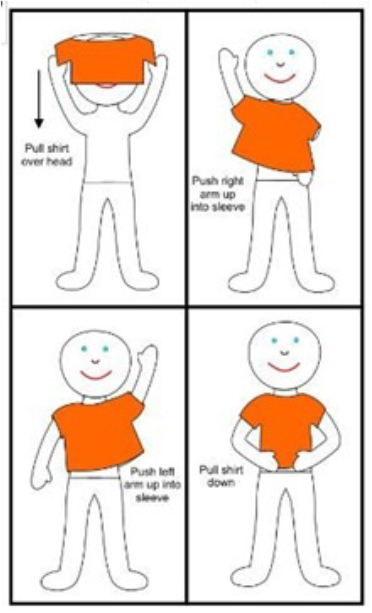
Small steps
Breaking down self-care skills into smaller steps and supporting the child through each step so that, in time, they can do more for themselves.
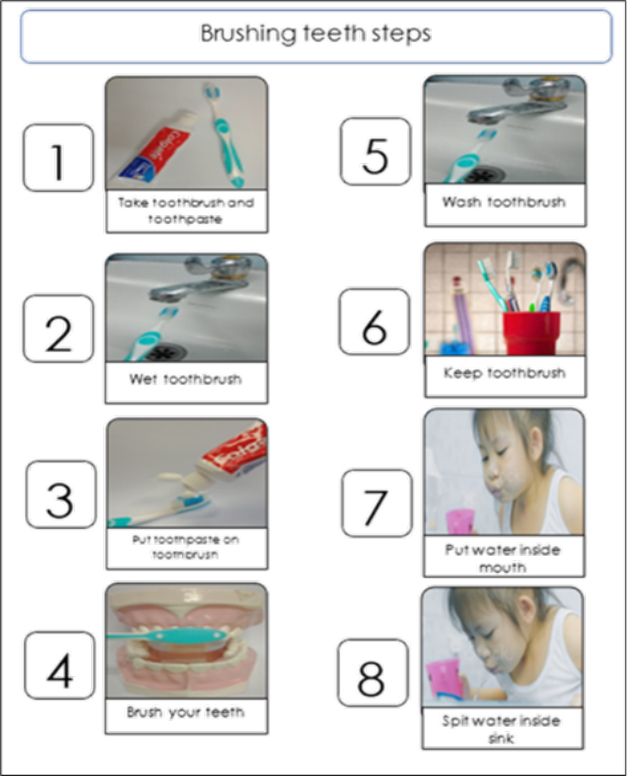
Establish a routine
Use the same routine or strategy each time a task is completed to help them learn it faster.
Daily visual schedule
Below are a few samples of visual schedules that may be adopted.
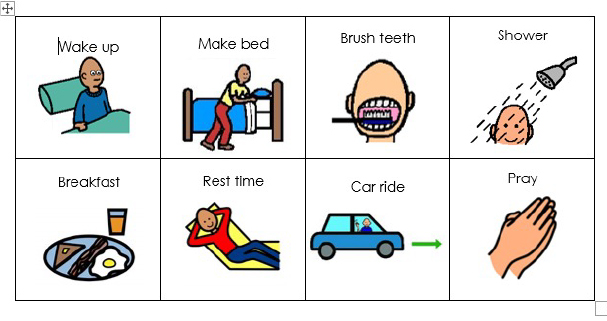
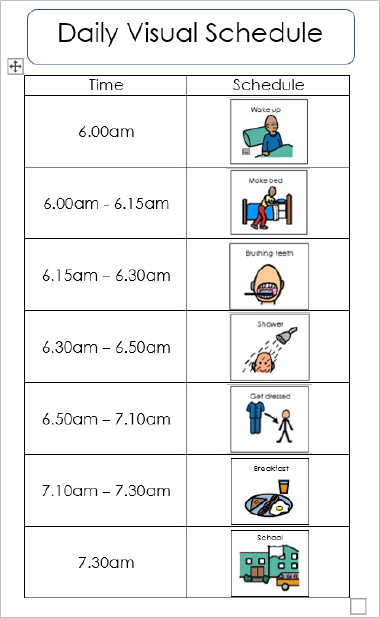
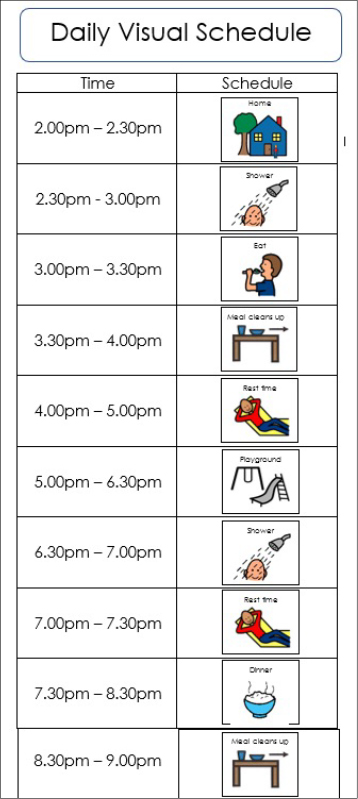
Consistency
Be consistent with the words and signs used to assist the child and keep instructions short and simple.
Allow enough time
Ensure that there is enough time available for the child to participate in self-care activities without feeling rushed (practice dressing on the weekend first, then do it before hurrying to preschool or school.)
Observation
Have your child observe other family members performing everyday self-care skills.
Role play
Implementing role play in self-care tasks such as eating, dressing, or brushing teeth with favourite toys. Trying it on others might help them learn how to do it before doing it themselves.
Take care of others
Allow the child to brush your hair or teeth first before brushing their own.
Timers
To show how long they must undergo an unpleasant task, such as teeth cleaning.
Social stories
They are an easy and effective way of teaching self-help skills to special needs children. A social story uses pictures and words to create a personal story around the step-by-step sequence. Reading the social story can help the child internalise the steps, develop comfort and confidence with each step and convey to them why they need to do the task.
Reference(s):
- https://www.verywellfamily.com/teach-self-care-skills-to-children-with-special-needs-4128821
- https://www.verywellfamily.com/teach-self-care-skills-to-children-with-special-needs-4128821
- https://childdevelopment.com.au/areas-of-concern/self-care/self-care-skills/
- https://childcare.extension.org/ways-to-encourage-self-help-skills-in-children/
- https://www.macmillanenglish.com/my/blog-resources/article/why-are-life-skills-important
Written by Kala Rani Naidu and Nuramirah Ismail

